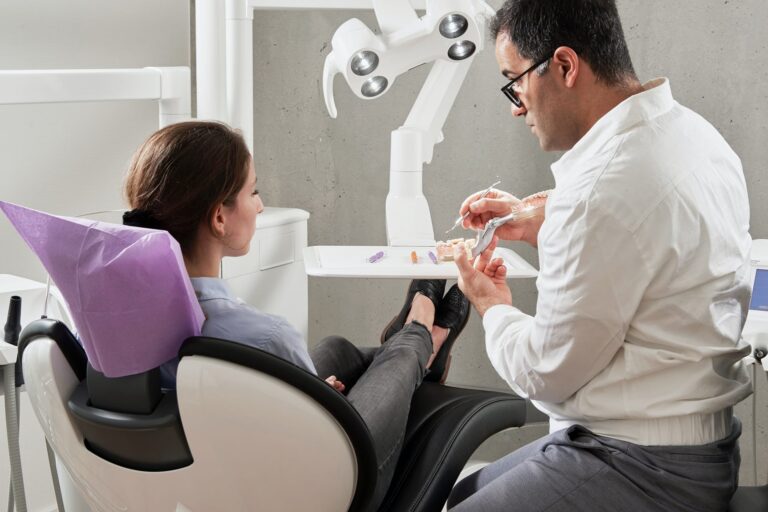has revolutionized primary care, bringing personalized care directly to patients in the comfort of their homes. This article explores the benefits and challenges of telehealth in primary care and how it is shaping the future of healthcare delivery.
Primary care is vital for preventative and comprehensive healthcare. It serves as patients’ first point of contact, offering continuous management of chronic conditions while promoting overall wellness. Telehealth, in essence, refers to using telecommunications technology to provide healthcare services remotely. This includes virtual consultations, remote monitoring, and electronic health records.
Technological advancements and the need for accessible and convenient care have driven the transition to telehealth in healthcare. It has transformed the way primary care is delivered, offering numerous benefits for both patients and providers.
Understanding Telehealth in Primary Care
Primary care refers to the essential healthcare services provided by a healthcare professional who acts as the initial touchpoint for patients. It encompasses preventive care, diagnosis, treatment, and ongoing management of common illnesses and chronic conditions.
Telehealth in primary care has evolved over time, offering various types of services and features that enhance accessibility, communication, continuity of care, and cost-effectiveness. It has transformed from simple phone consultations to sophisticated video conferencing and remote monitoring technologies, providing patients with convenient and efficient healthcare services.
Telehealth services in primary care include:
- virtual care and consultations,
- remote monitoring of vital signs,
- online prescription refills,
- telepsychiatry for mental health support, and
- tele-education for patients.
Privacy and security are important considerations in telehealth communication. Telehealth platforms prioritize privacy and security to ensure confidential communication between patients and providers. Measures like encryption, secure data storage, and user authentication are implemented to protect sensitive information.
Benefits of Telehealth in Primary Care
Accessibility and convenience for patients
Telehealth in primary care offers increased accessibility and convenience for patients. With telehealth, patients can have access to healthcare services from the comfort of their homes, eliminating the need for travel and reducing wait times.
Improved patient-provider communication
Telehealth in primary care improves patient-provider communication by allowing real-time video consultations, secure messaging, and remote monitoring. This enhances collaboration, enables timely follow-ups, and ensures better coordination of care.
Enhanced continuity of care
Enhanced continuity of care is a key benefit of telehealth in primary care. It ensures seamless coordination between primary care physicians, leading to better patient outcomes and reduced chances of medical errors.
Reduction in healthcare costs
Telehealth in primary care has the potential to reduce healthcare costs significantly. By eliminating the need for in-person visits and reducing hospital readmissions, telehealth can save money for both patients and primary care providers.
Expansion of healthcare access to underserved populations
Telehealth in primary care can potentially expand healthcare access to underserved populations. By overcoming geographical barriers and providing remote care, telehealth ensures everyone can receive the medical attention they need.
Personalized Care Through Telehealth
Telehealth revolutionizes the way patients receive personalized care from the comfort of their homes through the following:
- Tailored treatment plans and follow-ups. Telehealth allows for personalized treatment plans and follow-ups, ensuring patients receive the specific care they need. Primary care doctors can customize their approach based on individual needs, leading to better health outcomes.
- Remote monitoring for chronic conditions. Remote monitoring through telehealth allows for continuous monitoring of chronic conditions, such as diabetes or hypertension. This enables health professionals to track patients’ health remotely and intervene when necessary, leading to better disease management and prevention of complications.
- Behavioral health support and counseling. Behavioral health support and counseling are crucial aspects of telehealth in primary care. Through virtual sessions, patients can receive therapy for mental health conditions and access support for emotional well-being.
- Access to specialists and second opinions. Telehealth enables patients to easily access specialists and seek second opinions without the need for travel or long wait times. This ensures that patients receive comprehensive medical care from experts in their respective fields.
Challenges and Considerations
There are some challenges that need to be addressed to fully harness the potential of telehealth in primary care; these include:
1. Technological barriers and disparities
Technological barriers, such as limited internet access and outdated infrastructure, can hinder the widespread implementation of telehealth. Disparities in technology availability among different populations also pose challenges to equitable access to telehealth services.
2. Legal and regulatory challenges
Navigating legal and regulatory challenges is crucial for the successful implementation of telehealth in primary care. Issues such as licensure, reimbursement, and privacy regulations must be addressed to ensure compliance and patient safety.
3. Privacy and security concerns
Ensuring privacy and security is a critical aspect of telehealth in primary care. Safeguarding patient information, securing telecommunication channels, and complying with HIPAA regulations are key considerations for healthcare providers.
4. Maintaining patient trust and satisfaction
Ensuring patient trust and satisfaction is crucial in telehealth. Clear communication, empathy, and addressing concerns promptly can help build confidence. Regular feedback and quality assurance measures can enhance patient satisfaction.
As we confront the challenges outlined above, it’s essential to recognize the opportunities and strategies available to overcome them, ensuring the full realization of telehealth’s potential in primary care:
- Technological Advancements and Accessibility. Investing in infrastructure development and initiatives to expand internet access can mitigate technological barriers. Additionally, targeted efforts to provide devices and training to underserved populations can promote equitable access to telehealth services.
- Legal and Regulatory Adaptations. Collaborative efforts between policymakers, healthcare organizations, and industry stakeholders are crucial to address legal and regulatory challenges. Streamlining licensure processes, advocating for fair reimbursement policies, and ensuring compliance with evolving privacy regulations can foster a supportive regulatory environment for telehealth.
- Privacy and Security Innovation. Continuous innovation in telecommunication security protocols and adherence to stringent privacy regulations, such as HIPAA, are paramount. Implementing robust encryption measures, conducting regular audits, and investing in cybersecurity training can bolster patient confidence in the security of telehealth platforms.
- Patient-Centered Approach. Prioritizing clear communication, empathy, and responsiveness to patient concerns fosters trust and satisfaction in telehealth interactions. Establishing feedback mechanisms and implementing quality assurance measures enable healthcare providers to continually refine and enhance the patient experience, ultimately strengthening the foundation of telehealth in primary care.
By proactively addressing these challenges and acknowledging opportunities for innovation and collaboration, we can pave the way for a more accessible, efficient, and patient-centered telehealth landscape in primary care.
Future Directions and Opportunities
Integration of telehealth into primary care practice
Telehealth has the potential to seamlessly integrate into primary care practice, providing accessible and convenient healthcare services. By incorporating telehealth platforms, healthcare providers can enhance patient care and improve overall health outcomes.
Innovation in telehealth technologies
Innovation in telehealth technologies continues to advance, with new tools and platforms being developed to improve the delivery of healthcare remotely. These advancements are revolutionizing primary care by enhancing patient-provider communication and expanding access to quality care.
Policy changes and reimbursement strategies
Policy changes and reimbursement strategies play a crucial role in the widespread adoption of telehealth in primary care. By incentivizing telehealth providers and ensuring adequate compensation, these initiatives can help remove barriers to implementation and promote sustainable telehealth practices.
Potential for telehealth to transform healthcare delivery
Telehealth has the potential to revolutionize healthcare delivery by improving access, enhancing patient-provider communication, and reducing costs. With ongoing advancements in technology, telehealth is poised to transform how primary care is delivered and experienced.
Conclusion
The benefits of telehealth in primary care are undeniable. It offers patients personalized care and convenience while overcoming traditional barriers to healthcare access. As we look forward to taking on the challenges associated with telehealth implementation, it’s crucial to recognize the opportunities available to address these concerns and fully harness the potential of remote healthcare services.
At Loving Heart, we stand ready to face these challenges head-on, leveraging our expertise and commitment to patient-centric care. By incorporating telehealth into our primary care practice in Florida and Puyallup, Washington, we ensure that patients can access quality healthcare services from the comfort of their homes. With our patient-centered approach, we aim to enhance communication, improve access, and ultimately transform the healthcare experience for all.
As we look to the future, the integration of telehealth into primary care practice holds immense promise. With ongoing innovation, policy changes, and a steadfast commitment to patient care, telehealth revolutionizes healthcare delivery, providing accessible, efficient, and patient-centered services for individuals and communities across the nation.
Experience the benefits of telehealth with Loving Heart today. Whether you’re seeking convenient access to primary care services or personalized support for chronic conditions, Loving Heart is here to provide compassionate care, wherever you are. Join us in embracing the future of healthcare delivery, powered by telehealth technology, and guided by the passion for improving lives.






